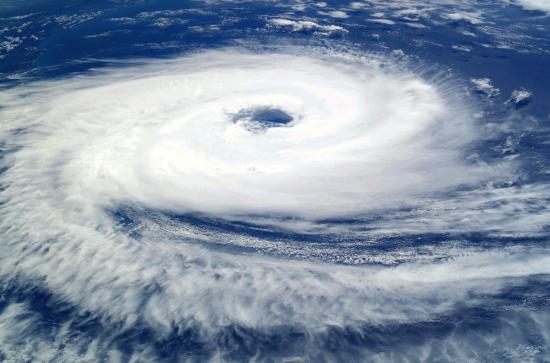
WITH over 275 deaths, thousands rendered homeless and millions stranded without food and water due to the cyclone Aila ripping through West Bengal and Orissa besides Bangladesh, the question of how to tackle a crisis of this scope and magnitude has once again come to the fore. The devastating cyclone in Myanmar on May 2, 2008 and the high-intensity earthquake in China on May 12, 2008 did revive the debate on disaster management. However, it petered out soon for lack of a sustained and consistent approach.
That Aila has weakened after taking its toll may be good news, but a recap of the devastating Super Cyclone that hit Orissa in 1999 will reveal that winds blowing at 250 to 300 kilometres an hour speed with rains and waves between 13 and 20 feet high affected nearly 1.25 crore population in that state. Nearly 40,000 people perished. Livestock to the tune of five lakh was destroyed. Poultry farming losses were estimated at Rs 400 million. The eco-system was adversely affected with millions of trees and plants having been destroyed.
Aila, a grim reminder of the climatic change, underscores the imperative need for India to continue to “pressurise the industrialised world to keep deep and urgent cuts in greenhouse gas emissions”. Greenpace, an NGO involved in the Aila-affected areas, says that this is the root cause of climateric changes. At the same time, domestically, India must take a bold and ambitious step to curtail emissions of carbon dioxide (the main greenhouse gas), by adopting mandatory energy efficiency and renewable energy targets, and creating fiscal incentives for the same, recommends the Greenpeace.
Hurricanes in North America and typhoons in Asia are known as cyclones in this part of the tropical world. There are three facets to the forecast of cyclones which are crucial. First, it is generally a “long warning” from the Meteorological department which does not set the damage control levers being pulled instantaneously, while it should.
Second, the onset is so gradual that you have enough time at hand to gear up your resources. And finally, the visitation of a cyclone to a specific zone “generally conforms” to the seasonal pattern. Thus, unlike earthquakes which are almost unpredictable, cyclones should meet with adequate safeguards. The entire world community needs to come alive to the factors contributing to climatic change before it is too late. For though earthquakes, cyclones and tsunamis have their typical regions on the globe for visitation, no country can claim to be totally immune from these catastrophes that affect humankind, livestock, fauna and flora besides other things, adversely, severely and surely.
What should be done to minimize the suffering of the affected people? Who can be more useful in taking care of the surviving victims? It is always better to keep the people living in the disaster-prone areas adequately informed about the dangers they are likely to face. They should be properly trained to cope with the crisis before any outside assistance is made available to them. Then, the government will need to provide only rehabilitation assistance. This requires some investment and advance planning, but the difference it makes to the efforts for saving human lives, fauna and flora as well as property is enormous.
When the latest earthquake rattled China, the dam in the area developed cracks and the entire population downstream was forced to live in trauma. The aftershocks of the earthquake made people sleep in the open. However, China, being adequately geared up to meet the situation, the people in the earthquake-hit areas did not feel the impact of the disaster as much as did those in the Irrawaddy river delta in Myanmar devastated by the cyclone Nargis.
The refusal of the military junta in Myanmar to welcome help being offered by other countries made the situation worse. “Public seems to be more forgiving in natural disaster on anyone’s part”. This is the crux of a United Nations’ House Workshop held in 1999 on the theme, “Super Cyclone in Orissa: Strategic Planning in Rehabilitation”. While recognizing the fact that the disaster management scenario in India has been conceptualized very recently, the workshop recommended the “5 R Strategy” i.e. — Relief, Rescue, Rehabilitation, Restoration and Reconstruction.
It is really shocking to know that despite 49 advisory bulletins sent by the Delhi-based Regional Specialized Meteorological Centre to Myanmar from April 28 to May 2, when Nargis caused devastation in that country, Yangon did not take the matter seriously. Its response in time and in accordance with the gravity of the calamity must have minimized considerably the damage in terms of human lives lost and property destroyed.
The onset of a cyclone is gradual. Putting the available resources in operational mode is possible. Devastation by a cyclone in a specific zone generally has a seasonal pattern. Hence, unlike earthquakes, which are almost unpredictable, cyclones can be handled with enough safeguards. With early warnings, much of damage can be avoided. India has a coastline of about 8,000 kilometres with 8 per cent of its land being vulnerable to cyclones. The devastation caused by recent disasters in India — whether it was the Bhuj earthquake in Gujarat, the Tsunami in the Andaman and Nicobar Islands, the Super Cyclone in Orissa or the latest Aila with 100 kilometres per hour wind-gushes uprooting all land-bounds has alerted the policy makers. There is readiness to tackle the situation in the wake of a natural disaster.
What is lacking in India, however, is that there is no army of foot-soldiers or “first responders” to handle a disaster. It should always be borne in mind that it is only the local community that comes to the rescue of the victims immediately in a catastrophe. Arming this community with awareness, training and equipment is highly desirable. What compounds the problem is the general public’s refusal to heed the warnings. In Andhra Pradesh and elsewhere too, fishermen are known to take their routine deep plunges caring two hoots about the alerts issued.
The general public should be made aware of the typical characteristics of disasters. For example, if the eye of a storm is passing through a certain area, there will be slight lull and the sky may be clear for some time. Then, suddenly, the cyclone may strike and play havoc. A properly informed and trained community can prepare itself to face the situation boldly and safely during the time between the lull and the visit of the storm. Experts believe that locally available indigenous mechanism which comes in handy works wonders sometimes, if the highly technical or even the state-of-the-art support system is not put in place.
For example, if a person is trapped in floodwaters, he could have just 20 empty plastic bottles (like the mineral water ones) tied around his person and he could survive at least till help reaches him. Or, if one puts a wet handkerchief on the nose in the wake of release of ammonia gas, then, no harm should come to him. If this fact could have been made known to the people at large, the face of Bhopal tragedy would not have been that grim.
The rescue, relief and rehabilitation tasks are quite difficult to undertake when the disaster has already struck. An early warning system can be of great help if it is taken with all seriousness. However, there must always be advance planning for it. A cyclone catching the community and the government unawares leaves no scope for an on-the-spot assessment for some time. Bad weather conditions continue for a long time, and even relief arriving from other quarters goes waste due to its being dumped.
After the lapse of the crucial first 72 hours, the authorities generally are complacent or exhausted, particularly because of the fact that all hopes of rescuing those trapped or missing are gone. A well-rehearsed disaster management plan takes these factors in view and prioritizes the tasks accordingly. The managers know when to stop looking for the dead and devote their time and energy to relief and rehabilitation. They also know what alternative channels of information, transportation, etc, are available to them.
The aftermath of a disaster is the most difficult situation to handle. The authorities get busy with the tasks of disposal of the dead and attending to the injured and the vulnerable people. The idea of minimizing the damages and mitigating the miseries of the disaster-hit should always be there in the minds of the planners.
The writer, a senior IPS officer of the Haryana government, is a graduate on Critical Incident Management from the Louisiana State University, Louisiana, USA
Photo credit:http://indiaweatherforecasts.com/blog/wp-content/uploads/2008/06/1991bangladeshcyclonesmall1.jpg




